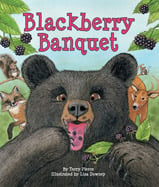Alignment to Standards for TX

| Grade | Number | Standard |
|---|---|---|
| 1 | 112.12 (b) (10) | organisms resemble their parents and have structures and processes that help them survive within their environments. |
| 1 | 112.12 (b) (10) (A) | external characteristics of an animal are related to where it lives, how it moves, and what it eats |
| 1 | 112.12 (b) (5) (A) | classify objects by observable properties of the materials from which they are made such as larger and smaller, heavier and lighter, shape, color, and texture |
| 1 | 112.12 (b) (9) (C) | interdependence among living organisms such as energy transfer through food chains and animals using plants for shelter. |
| 1 | 113.3. (1.6) (B) | identify examples of and uses for natural resources in the community, state, and nation; and |
| 2 | 112.13. (b) (10) (A) | compare how the physical characteristics and behaviors of animals help them meet their basic needs such as fins help fish move and balance in the water |
| 2 | 112.13. (b) (9) (C) | ways living organisms depend on each other and on their environments such as food chains |
| 3 | 112.14. (b) (10) | organisms undergo similar life processes and have structures that help them survive within their environments. |
| 3 | 112.14. (b) (10) (A) | explore how structures and functions of plants and animals allow them to survive in a particular environment |
| 3 | 112.14. (b) (10) (B) | some characteristics of organisms are inherited such as the number of limbs on an animal or flower color and recognize that some behaviors are learned in response to living in a certain environment such as animals using tools to get food |
| 3 | 112.14. (b) (7) (D) | explore the characteristics of natural resources that make them useful in products and materials such as clothing and furniture and how resources may be conserved. |
| 3 | 112.14. (b) (9) | organisms have characteristics that help them survive and can describe patterns, cycles, systems, and relationships within the environments. |
| 3 | 112.14. (b) (9) (C) | describe environmental changes such as floods and droughts where some organisms thrive and others perish or move to new locations. |
| 4 | 112.15. (b) (10) | organisms undergo similar life processes and have structures that help them survive within their environment. |
| 4 | 112.15. (b) (9)(A) | most producers need sunlight, water, and carbon dioxide to make their own food, while consumers are dependent on other organisms for food |
| 5 | 112.16. (b) (10) | organisms undergo similar life processes and have structures that help them survive within their environments. |
| 5 | 112.16. (b) (10) (B) | differentiate between inherited traits of plants and animals such as spines on a cactus or shape of a beak and learned behaviors such as an animal learning tricks or a child riding a bicycle |
| 5 | 112.16. (b) (9) | there are relationships, systems, and cycles within environments. |
| 5 | 112.16. (b) (9) (B) | describe how the flow of energy derived from the Sun, used by producers to create their own food, is transferred through a food chain and food web to consumers and decomposers |
| 5 | 112.16. (b) (9) (C) | predict the effects of changes in ecosystems caused by living organisms, including humans, such as the overpopulation of grazers or the building of highways |
| K | 112.11 (b) (10) | organisms resemble their parents and have structures and processes that help them survive within their environments. |
| K | 112.11 (b) (3) (A) | identify and explain a problem such as the impact of littering on the playground and propose a solution in his/her own words |
| PK | PK.1. (J) | compares objects and organisms and identifies similarities and differences |
| PK | PK.1. (K) | sorts objects and organisms into groups and begins to describe how groups were organized |
| PK | PK.2. (B) | describes properties of objects and characteristics of living things |
| PK | PK.2. (I) | identifies similarities and differences among objects and organisms |